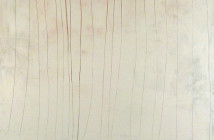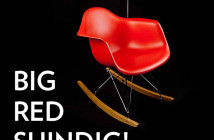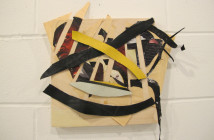October 02, 2012
Every year since 1981, the Chicago-based John D. and Catherine T. MacArthur Foundation has awarded fellowships to individual pioneers within the fields of the arts and sciences. Nicknamed the MacArthur "Genius Grants," recipients are bestowed with $500,000 to fund whatever creative endeavor they choose—with no strings attached. The process of the Fellowships is a secretive one as potential candidates aren’t allowed to apply or even know of their candidacy while being evaluated for the awards. It seems to work, though, as past recipients prove to fit the prestige associated with the foundation.
This year the arts are well-represented and below is a sampling of some the lucky recipients from the MacArthur Foundation website:
Uta Barth, Conceptual Photographer, Los Angeles, CA
Uta Barth is an artist whose evocative, abstract photographs explore the nature of vision and the difference between how a human sees reality and how a camera records it. In contrast to documentary and confessional modes of photography, Barth intentionally depicts mundane or incidental objects in nondescript surroundings in order to focus attention on the fundamental act of looking and the process of perception. In white blind (bright red) (2002), she investigates both literal and metaphorical modes of perception in ghostly compositions that mimic the afterimages that persist in one’s visual memory after turning away from an object. Her recent series, …and to draw a bright, white line with light (2011), marks the first time Barth has intervened in the staging of her photographs. By manipulating curtains in her home, she created lines and curves of light that expand from a sliver to a wide ribbon across a sequence of large-scale, dramatically cropped images that evoke the subtle passage of time while also highlighting the visceral and intellectual pleasures of seeing. As Barth continues to expand her photographic practice to probe the theme of perception in new and inventive ways, she is encouraging viewers to reconsider the traditional functions and expectations of the photographic image.
Natalia Almada, Documentary Filmmaker, Mexico City, Mexico
Natalia Almada is a filmmaker revealing rich new perspectives on Mexican history, politics, and culture in insightful and poetic films that push the boundaries of how the documentary form addresses social issues. A dual citizen of Mexico and the United States who has lived in both countries since childhood, Almada does not use conventional structures or techniques, such as interviews with specialists or a linear timeline. Instead, she incorporates powerful visual images and the observations of ordinary people she encounters with her camera into an intimate, multilayered form of storytelling. In El General(2009), Almada weaves together archival material; audio tapes of her grandmother’s recollections of Almada’s great-grandfather, Mexico’s president Plutarco Elías Calles (1924—28); and compelling footage of Mexico City during the contested presidential election of 2006. The result is a lyrical, quietly mesmerizing meditation on the legacy of Mexico’s political history, the relationship between personal and collective memory, and how memory informs one’s view of self, family, and country. Almada creates a striking and moving portrayal of the violence of drug trafficking and its effects on Mexican society in El Velador (2011). Although there are no scenes of violence in this haunting and contemplative film, it conveys the overwhelming crisis of the drug war through snippets of radio and television broadcasts, the sounds of construction in an ever-expanding cemetery, and the quiet imagery of families visiting the graves of loved ones. In films that pose more questions than they answer, Almada is capturing complex and nuanced views of the issues that define Mexican-American relations while reaffirming the potency of documentary both as an art form and a powerful medium for highlighting the often unseen implications of social conflict.
An-My Lê, Photographer, Annandale-on-Hudson, NY
An-My Lê is an artist whose photographs of landscapes transformed by war or other forms of military activity blur the boundaries between fact and fiction and are rich with layers of meaning. A refugee from Vietnam and resident of the United States since 1975, much of Lê’s work is inspired by her own experience of war and dislocation. From black and white images of her native Vietnam taken on a return visit in 1994 to pictures of Vietnam War battle re-enactments in rural America, her photographs straddle the documentary and the conceptual, creating a neutral perspective that brings the essential ambiguity of the medium to the fore. In her series 29 Palms (2003—2004), Lê documents American soldiers training in a desert in Southern California before their deployment to Iraq. She focuses her camera alternately on young recruits and the harsh terrain in which they practice their drills, lending an obvious artificiality to the photographs that invites speculation about the romance and myth of contemporary warfare. Currently, Lê is documenting the U.S. military’s presence at sites around the world where personnel are undertaking training missions, patrolling international waterways, and offering humanitarian aid. An additional series in progress explores the ongoing ties between Vietnamese nationals who have migrated to southern Louisiana over the past twenty-five years and their homeland in the Mekong Delta. Approaching the subjects of war and landscape from new and powerful perspectives, this accomplished photographer continues to experiment and contribute profoundly to the evolution of her medium.
Benoît Rolland, Stringed-Instrument Bow Maker, Boston, MA
Benoît Rolland is a master bow maker who is experimenting with new designs and materials to create violin, viola, and cello bows for the twenty-first century. As a talented violinist who undertook rigorous training steeped in the tradition of nineteenth-century bow design, Rolland brings a unique perspective and keen understanding of musicianship to his work. Prized by contemporary musicians for rivaling the quality of the revered bows of the nineteenth century, his beautifully crafted bows combine the sensitivity, speed, and robust power of the older pieces while also offering new dimensions of tonal brilliance that satisfy the highest artistic demands. Before making a bow for a particular musician, he listens to recordings or live performances in order to create a finished product that perfectly matches the individual player’s personal playing style and also brings out an extraordinary richness of tone and color in the instrument. In response to the increasing scarcity of pernambuco wood, favored by musicians and bow makers for centuries, Rolland began experimenting with alternative materials, including graphite. He produced the first graphite bow of concert quality and added a further design modification in its adjustable camber, allowing musicians to alter the handling of the bow and customize their playing for particular pieces. Rolland’s synthesis of musicianship, historical knowledge, technical skills, and continued research and experimentation ensures that he will be a trailblazer in bow design for present and future generations of musicians.
For a complete list of the 2012 MacArthur Foundation Fellowship recipients, please visit their website.




